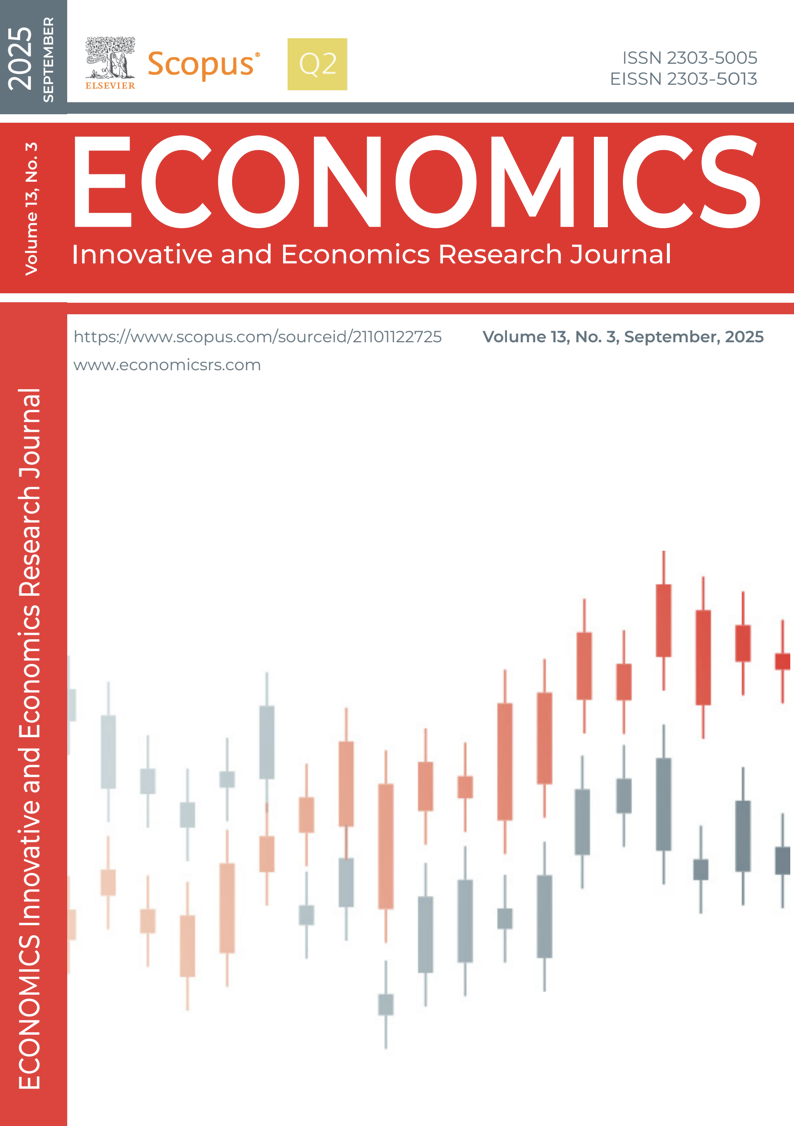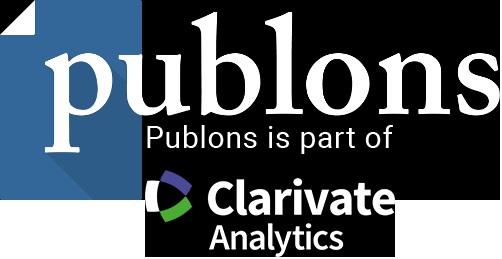GREEN HRM AS A MEDIATOR: STRATEGIC MANAGEMENT ACCOUNTING AND ENVIRONMENTAL PERFORMANCE IN THE JORDANIAN INDUSTRY
DOI:
https://doi.org/10.2478/eoik-2025-0053Keywords:
Environmental Sustainability, Strategic Management Accounting Practices, Green Human Resource Management, Contingency Theory, Jordanian Industrial SectorAbstract
Amid escalating global environmental pressures, this study examines how Strategic Management Accounting Practices (SMAPs) enhance environmental performance in Jordan's industrial sector. Green Human Resource Management (GHRM) serves as a crucial mediator. Drawing on contingency theory, we propose that SMAPs—including environmental cost analysis and lifecycle budgeting—require complementary GHRM mechanisms to transform technical accounting data into sustainable outcomes. Data from 180 professionals across 53 manufacturing firms, analysed via Smart PLS-SEM, reveal that GHRM fully mediates the relationship between SMAPs and environmental performance. Green policy alignment emerged as the most influential mediator, while diminishing returns in green adaptability and employee involvement at lower levels of SMAPs adoption suggest threshold effects. This study advances contingency theory by empirically validating GHRM's role as a sociotechnical bridge between accounting systems and ecological outcomes. For practitioners, the results necessitate the integration of SMAPs with targeted HR interventions, such as sustainability-linked training and cross-functional green teams. This alignment enhances compliance and operational efficiency for Jordan—a water-scarce economy facing stringent environmental regulations. While cross-sectional data and perceptual measures limit causal claims, this research provides a validated framework for emerging economies. Future studies should employ longitudinal designs to assess GHRM's evolving impact during sustainability transitions and explore cultural moderators in Arab collectivist contexts. This work bridges environmental accounting and HRM scholarship, demonstrating that technical systems require human-centric mechanisms to operationalise sustainability.
References
Abdallah, A. B., & Al-Ghwayeen, W. S. (2020). Green supply chain management and business perfor-
mance: The mediating roles of environmental and operational performances. Business Process
Management Journal, 26(2), 489–512. https://doi.org/10.1108/BPMJ-03-2018-0091
Aboramadan, M. (2022). The effect of green HRM on employee green behaviors in higher education:
The mediating mechanism of green work engagement. International Journal of Organizational
Analysis, 30, 7–23. https://doi.org/10.1108/IJOA-05-2020-2190
Abu Afifa, M. M., & Saleh, I. (2021). Management accounting systems effectiveness, perceived environ-
mental uncertainty and enterprise risk management: Evidence from Jordan. Journal of Account-
ing & Organizational Change, 17(5), 704–727. https://doi.org/10.1108/JAOC-10-2020-0165
Adams, C. A., & Larrinaga, C. (2019). Progress: Engaging with organisations in pursuit of improved
sustainability accounting and performance. Accounting, Auditing & Accountability Journal,
(8), 2367–2394. https://doi.org/10.1108/AAAJ-03-2018-3399
Adewale, T. T., Olorunyomi, T. D., & Odonkor, T. N. (2021). Advancing sustainability accounting: A
unified model for ESG integration and auditing. International Journal of Science and Research
Archive, 2(1), 169–185. https://doi.org/10.30574/ijsra.2021.2.1.0021
Adu Sarfo, P., Zhang, J., Nyantakyi, G., Lassey, F. A., Bruce, E., & Amankwah, O. (2024). Influence of green
human resource management on firm’s environmental performance: Green employee empowerment
as a mediating factor. PLOS ONE, 19(4), e0293957. https://doi.org/10.1371/journal.pone.0293957
Aguinis, H., & Solarino, A. M. (2019). Transparency and replicability in qualitative research: The case
of interviews with elite informants. Strategic Management Journal, 40(8), 1291–1315. https://
doi.org/10.1002/smj.3015
Ahmed, F., Fattani, M. T., Ali, S. R., & Enam, R. N. (2022). Strengthening the bridge between academic
and the industry through the academia-industry collaboration plan design model. Frontiers in
Psychology, 13. https://doi.org/10.3389/fpsyg.2022.875940
Akankunda, B., Nkundabanyanga, S. K., Kaawaase, T. K., Adaramola, M. S., Nkurunziza, G., & Tum-
wine, S. (2024). The mediating effect of management control systems on human capital and
sustainable performance among Ugandan power companies. Cogent Business & Management,
(1). https://doi.org/10.1080/23311975.2024.2324369
Al Hashem, R. O., & Al Shaar, E. M. (2022). The impact of green human resource management prac-
tices on job performance – The mediating role of resistance to change: An applied study on
Jordanian manufacturing companies. Jordan Journal of Business Administration, 18(1). https://
jjournals.ju.edu.jo/index.php/JJBA/article/view/27
Al-Abdallah, G. M. (2021). Can internal marketing activities save small and medium industrial enter-
prises in a tough economy? Back to the basics approach. International Journal of Industrial and
Systems Engineering, 38(4), 469–483. https://doi.org/10.1504/IJISE.2021.116925
Alam, M. A., Niu, X., & Rounok, N. (2021). Effect of green human resource management (GHRM)
overall on organization’s environmental performance: The mediating role of green employee
empowerment. International Journal of Research in Business and Social Science, 10(4), 99–
https://doi.org/10.20525/ijrbs.v10i4.1230
Alkhawaldeh, A. (2017). School-based teacher training in Jordan: Towards on-school sustainable pro-
fessional development. Journal of Teacher Education for Sustainability, 19(2), 51–68. https://
doi.org/10.1515/jtes-2017-0014
Alnaim, M., & Metwally, A. B. M. (2024). Institutional pressures and environmental management ac-
counting adoption: Do environmental strategy matter? Sustainability, 16(7), 3020. https://doi.
org/10.3390/su16073020
Al-Nimer, M. (2010). An exploratory study on factors influencing the adoption of management account-
ing practices in developing countries: Evidence from Jordan. SSRN Electronic Journal. https://
doi.org/10.2139/ssrn.1661975
Al-Nimer M. / Economics - Innovative and Economics Research Journal, doi: 10.2478/eoik-2025-0053
Al-Romeedy, B. S., & Alharethi, T. (2025). Leveraging green human resource management for sus-
tainable tourism and hospitality: A mediation model for enhancing green reputation. Discover
Sustainability, 6, 67. https://doi.org/10.1007/s43621-025-00829-2
Al-Shaer, H., & Zaman, M. (2018). Credibility of sustainability reports: The contribution of audit commit-
tees. Business Strategy and the Environment, 27(7), 973–986. https://doi.org/10.1002/bse.2046
Alsharari, N. M. (2024). The interplay of strategic management accounting, business strategy and orga-
nizational change: As influenced by a configurational theory. Journal of Accounting in Emerg-
ing Economies, 20(1), 153–176. https://doi.org/10.1108/JAOC-09-2021-0130
Appannan, J. S., Mohd Said, R., Ong, T. S., & Senik, R. (2023). Promoting sustainable development
through strategies, environmental management accounting and environmental performance. Busi-
ness Strategy and the Environment, 32(4), 1914–1930. https://doi.org/10.1002/bse.3227
Appiagyei, K., & Donkor, A. (2024). Integrated reporting quality and sustainability performance: Does
firms’ environmental sensitivity matter? Journal of Accounting in Emerging Economies, 14(1),
–47. https://doi.org/10.1108/JAEE-02-2022-0058
Arulrajah, A. A., Opatha, H. H. D. N. P., & Nawaratne, N. N. J. (2015). Green human resource man-
agement practices: A review. Sri Lankan Journal of Human Resource Management, 5(1),
–16. https://doi.org/10.4038/sljhrm.v5i1.5624
Ateeq, A., AlMuslemani, A., Milhem, M., & Alzoraiki, M. (2024). Strategic integration of business
systems: Merging ERP, HRM, and accounting for enhanced performance—An insightful con-
ceptual article. In B. Awwad (Ed.), The AI revolution: Driving business innovation and research
–284. Springer. https://doi.org/10.1007/978-3-031-54379-1_18
Bade, C., Olsacher, A., Boehme, P., Truebel, H., Bürger, L., & Fehring, L. (2024). Sustainability in the
pharmaceutical industry—An assessment of sustainability maturity and effects of sustainability
measure implementation on supply chain security. Corporate Social Responsibility and Envi-
ronmental Management, 31(1), 224–242. https://doi.org/10.1002/csr.2564
Banga, C., & Gobind, J. (2025). Implementation of sustainability in human resource management: A
literature review. SA Journal of Human Resource Management, 23. https://doi.org/10.4102/sa-
jhrm.v23i0.2741
Bhale, U., & Bedi, H. S. (2023). SEM model fit indices meaning and acceptance of model literature
support. SSRN. https://doi.org/10.2139/ssrn.4659352
Burritt, R. L., Hahn, T., & Schaltegger, S. (2002). Towards a comprehensive framework for en-
vironmental management accounting: Links between business actors and environmental
management accounting tools. Australian Accounting Review, 12(27), 39–50. https://doi.
org/10.1111/j.1835-2561.2002.tb00202.x
Cadez, S., & Guilding, C. (2008). An exploratory investigation of an integrated contingency model
of strategic management accounting. Accounting, Organizations and Society, 33(7–8), 836–
https://doi.org/10.1016/j.aos.2008.01.003
Campos-García, I., Alonso-Muñoz, S., González-Sánchez, R., & Medina-Salgado, M. S. (2024). Human
resource management and sustainability: Bridging the 2030 agenda. Corporate Social Respon-
sibility and Environmental Management, 31(3),2033–2053. https://doi.org/10.1002/csr.2680
Carballo-Penela, A., Ruzo-Sanmartín, E., Álvarez-González, P., & Paillé, P. (2023). How do GHRM
practices influence firms’ economic performance? A meta-analytic investigation of the role of
GSCM and environmental performance. Journal of Business Research, 165, 113984. https://doi.
org/10.1016/j.jbusres.2023.113984
Chali, B. D., & Lakatos, V. (2024). The impact of human resource management on financial perfor-
mance: A systematic review in cooperative enterprises. Journal of Risk and Financial Manage-
ment, 17(10), 439. https://doi.org/10.3390/jrfm17100439
Chaudhuri, A., & Jayaram, J. (2019). A socio-technical view of performance impact of integrated qual-
ity and sustainability strategies. International Journal of Production Research, 57(5), 1478–
https://doi.org/10.1080/00207543.2018.1492162
Green HRM as a Mediator: Strategic Management Accounting and Environmental Performance in the Jordanian Industr
Chenhall, R. H. (2003). Management control systems design within its organizational context: Findings
from contingency-based research and directions for the future. Accounting, Organizations and
Society, 28(2–3), 127–168. https://doi.org/10.1016/S0361-3682(01)00027-7
Chiappetta Jabbour, C. J., Mauricio, A. L., & Jabbour, A. B. L. de S. (2017). Critical success factors and
green supply chain management proactivity: Shedding light on the human aspects of this rela-
tionship based on cases from the Brazilian industry. Production Planning & Control, 28(6–8),
–683. https://doi.org/10.1080/09537287.2017.1309705
Christ, K. L., & Burritt, R. L. (2013). Environmental management accounting: The significance of
contingent variables for adoption. Journal of Cleaner Production, 41, 163–173. https://doi.
org/10.1016/j.jclepro.2012.10.007
Cohen, J. (1988). Statistical Power Analysis for the Behavioral Sciences (2nd ed.). Routledge. https://
doi.org/10.4324/9780203771587
Contini, G., Grandi, F., & Peruzzini, M. (2025). Human-centric green design for automatic produc-
tion lines: Using virtual and augmented reality to integrate industrial data and promote sus-
tainability. Journal of Industrial Information Integration, 44, 100801. https://doi.org/10.1016/j.
jii.2025.100801
Conway, J. M., & Lance, C. E. (2010). What reviewers should expect from authors regarding common meth-
od bias in organizational research. Journal of Business and Psychology, 25(3), 325–334. https://
doi.org/10.1007/s10869-010-9181-6
Dang, L. A., Le, T. M. H., Le, T. H., & Pham, T. B. T. (2021). The effect of strategic management
accounting on business performance of sugar enterprises in Vietnam. Accounting, 7(5), 1085–
https://doi.org/10.5267/j.ac.2021.2.031
Dasanayaka, C. H., Murphy, D. F., Nagirikandalage, P., & Abeykoon, C. (2021). The application of
management accounting practices towards the sustainable development of family businesses: A
critical review. Cleaner Environmental Systems, 3. https://doi.org/10.1016/j.cesys.2021.100064
Dasinapa, M. B. (2024). The integration of sustainability and ESG accounting into corporate reporting prac-
tices. Advances in Applied Accounting Research, 2(1), 13– 25. https://doi.org/10.60079/aaar.v2i1.167
Donaldson, L. (2001).The contingency theory of organizations. SAGE.https://doi.org/10.4135/9781452229249
Dumont, J., Shen, J., & Deng, X. (2017). Effects of green HRM practices on employee workplace green
behavior: The role of psychological green climate and employee green values. Human Resource
Management, 56(4), 613–627. https://doi.org/10.1002/hrm.21792
Elshaer, I. A., Azazz, A. M. S., Kooli, C., Alqasa, K. M. A., Afaneh, J., Fathy, E. A., Fouad, A. M., &
Fayyad, S. (2024). Resilience for sustainability: The synergistic role of green human resources
management, circular economy, and green organizational culture in the hotel industry. Adminis-
trative Sciences, 14(11), 297. https://doi.org/10.3390/admsci14110297
Ercantan, O., & Eyupoglu, S. (2022). How do green human resource management practices encourage
employees to engage in green behavior? Perceptions of university students as prospective em-
ployees. Sustainability, 14(3), 1718. https://doi.org/10.3390/su14031718
Esho, E., & Verhoef, G. (2020). A holistic model of human capital for value creation and superior
firm performance: The strategic factor market model. Cogent Business & Management, 7(1),
https://doi.org/10.1080/23311975.2020.1728998
Fang, L., Shi, S., Gao, J., & Li, X. (2022). The mediating role of green innovation and green cul-
ture in the relationship between green human resource management and environmental perfor-
mance. PLOS ONE, 17(9), e0274820. https://doi.org/10.1371/journal.pone.0274820
Fornell, C., & Larcker, D. F. (1981). Evaluating structural equation models with unobservable vari-
ables and measurement error. Journal of Marketing Research, 18(1), 39–50. https://doi.
org/10.1177/002224378101800104
Freihat, L., Al-Qaaida, M., Huneiti, Z., & Abbod, M. (2024). Green human resource management/sup-
ply chain management/regulation and legislation and their effects on sustainable development
goals in Jordan. Sustainability, 16(7), 2769. https://doi.org/10.3390/su16072769
Al-Nimer M. / Economics - Innovative and Economics Research Journal, doi: 10.2478/eoik-2025-0053
Garg, N., Priyadarshi, P., & Malik, A. (2024). Financial well-being: An integrated framework, oper-
ationalization, and future research agenda. Journal of Consumer Behaviour, 23(6), 3194–
https://doi.org/10.1002/cb.2372
Gerged, A. M., Beddewela, E., & Cowton, C. J. (2021). Is corporate environmental disclosure associated
with firm value? A multi-country study of Gulf Cooperation Council firms. Business Strategy
and the Environment, 30(1), 185–203. https://doi.org/10.1002/bse.2616
Gerhart, B., & Feng, J. (2021). The resource-based view of the firm, human resources, and human
capital: Progress and prospects. Journal of Management, 47(7), 1796–1819. https://doi.
org/10.1177/0149206320978799
Giama, E., & Papadopoulos, A. M. (2016). Carbon footprint analysis as a tool for energy and environ-
mental management in small and medium-sized enterprises. International Journal of Sustain-
able Energy, 37(1), 21–29. https://doi.org/10.1080/14786451.2016.1263198
Gond, J. P., Grubnic, S., Herzig, C., & Moon, J. (2012). Configuring management control systems: The-
orizing the integration of strategy and sustainability. Management Accounting Research, 23(3),
–223. https://doi.org/10.1016/j.mar.2012.06.003
Guenther, E., Endrikat, J., & Guenther, T. W. (2016). Environmental management control systems: A
conceptualisation and a review of the empirical evidence. Journal of Cleaner Production, 136,
–171. https://doi.org/10.1016/j.jclepro.2016.02.043
Guerci, M., Longoni, A., & Luzzini, D. (2016). Translating stakeholder pressures into environmental
performance – The mediating role of green HRM practices. The International Journal of Human
Resource Management, 27(2), 262–289. https://doi.org/10.1080/09585192.2015.1065431
Gupta, A., & Jangra, S. (2024). Green human resource management and work engagement: Linking HRM
performance attributions. Sustainable Futures, 7, 100174. https://doi.org/10.1016/j.sftr.2024.100174
Haddock-Millar, J., Sanyal, C., & Müller-Camen, M. (2016). Green human resource management: A compar-
ative qualitative case study of a United States multinational corporation. The International Journal
of Human Resource Management, 27(2), 192–211. https://doi.org/10.1080/09585192.2015.1052087
Hadi, A. A., Alnoor, A., & Abdullah, H. O. (2018). Socio-technical approach, decision-making environ-
ment, and sustainable performance: Role of ERP systems. Interdisciplinary Journal of Informa-
tion, Knowledge, and Management, 13, 397–415. https://doi.org/10.28945/4149
Hair, J., & Alamer, A. (2022). Partial least squares structural equation modeling (PLS-SEM) in second
language and education research: Guidelines using an applied example. Research Methods in
Applied Linguistics, 1(3), 100027. https://doi.org/10.1016/j.rmal.2022.100027
Hajj Hussein, S., & Bou Zakhem, N. (2024). The impact of green human resource management prac-
tices on brand citizenship behavior and employee turnover intention: A mixed methods ap-
proach. Sustainability, 16(15), 6528. https://doi.org/10.3390/su16156528
Harney, B. (2016). Contingency theory. In Encyclopedia of human resource management. Edward El-
gar. https://doi.org/10.4337/9781800378841.C.19
Hasan, S. A. S., Waghule, S. N., & Hasan, M. B. (2024). Linking environmental management account-
ing to environmental performance: The role of top management support and institutional pres-
sures. Cogent Business & Management, 11(1). https://doi.org/10.1080/23311975.2023.2296700
Hauashdh, A., Nagapan, S., Jailani, J., & Gamil, Y. (2024). An integrated framework for sustainable and
efficient building maintenance operations aligning with climate change, SDGs, and emerging
technology. Results in Engineering, 21, 101822. https://doi.org/10.1016/j.rineng.2024.101822
He, W., Mushtaq, N., & Jan, L. (2024). Unlocking the dual black box of GHRMP & EGOC for sus-
tainable environmental performance in developing economies: Can green workplace behavior
and green passion transmit the real change? Environment, Development and Sustainability, 26,
–16055. https://doi.org/10.1007/s10668-023-03286-x
Henri, J. F., & Journeault, M. (2010). Eco-control: The influence of management control systems on
environmental and economic performance. Accounting, Organizations and Society, 35(1), 63–
https://doi.org/10.1016/j.aos.2009.02.001
Green HRM as a Mediator: Strategic Management Accounting and Environmental Performance in the Jordanian Industr
Henseler, J., Ringle, C. M., & Sarstedt, M. (2015). A new criterion for assessing discriminant validity
in variance-based structural equation modeling. Journal of the Academy of Marketing Science,
(1), 115–135. https://doi.org/10.1007/s11747-014-0403-8
Humairah, K. A., Irawan, A., Ibrahim, M. B. H., Yendra, Y., & Rasyid, A. (2023). Crafting effective HRM
strategies for enhancing organizational performance and employee engagement. Advances in Hu-
man Resource Management Research, 1(3), 126–136. https://doi.org/10.60079/ahrmr.v1i3.183
Irawan, N., Esthi, R., Wijayanti, I., Widodo, Z., & Darmaningrum, K. (2023). Unlocking organic agroin-
dustry employee eco-innovation: Role of green product knowledge and green transformational
leadership. Indonesian Journal of Economics, Social, and Humanities, 5(3), 204–222. https://
doi.org/10.31258/ijesh.5.3.204-222
Issa, M. S. B. (2023). Factors of stability and sustainable development in Jordan in its first centenary
–2021 (an analytical descriptive study). Heliyon, 9(11), e20993. https://doi.org/10.1016/j.
heliyon.2023.e20993
Jabbour, C. J. C. (2011). How green are HRM practices, organizational culture, learning and team-
work? A Brazilian study. Industrial and Commercial Training, 43(2), 98–105. https://doi.
org/10.1108/00197851111108926
Jabbour, C. J. C., & Jabbour, A. B. L. de S. (2016). Green human resource management and green sup-
ply chain management: Linking two emerging agendas. Journal of Cleaner Production, 112,
–1833. https://doi.org/10.1016/j.jclepro.2015.01.052
Jabbour, C. J. C., Santos, F. C. A., & Nagano, M. S. (2013). Green teams: Understanding their roles in
the environmental management of companies located in Brazil. Journal of Cleaner Production,
, 58–66. https://doi.org/10.1016/j.jclepro.2012.09.018
Jackson, S. E., Renwick, D. W. S., Jabbour, C. J. C., & Muller-Camen, M. (2011). State-of-the-art
and future directions for green human resource management: Introduction to the spe-
cial issue. German Journal of Human Resource Management, 25(2), 99–116. https://doi.
org/10.1177/239700221102500203
Joshi, A., Kataria, A., Rastogi, M., Beutell, N. J., Ahmad, S., & Yusliza, M. Y. (2023). Green human resource
management in the context of organizational sustainability: A systematic review and research agen-
da. Journal of Cleaner Production, 430, 139713. https://doi.org/10.1016/j.jclepro.2023.139713
Journeault, M. (2016). The influence of the eco-control package on environmental and economic per-
formance: A natural resource-based approach. Journal of Management Accounting Research,
(2), 149–178. https://doi.org/10.2308/jmar-51476
Kagzi, M., Dagar, V., Doytch, N., Krishnan, D., & Raj, M. (2024). Curbing environmental degradation
to balance sustainable development: Evidence from China. Environmental and Sustainability
Indicators, 24, 100465. https://doi.org/10.1016/j.indic.2024.100465
Kamboj, J., & Anthonysamy, E. (2024). Mapping the green human resource management practices:
A systematic scoping review and its implications for employees’ well-being. Human Systems
Management, 43(6), 932–970. https://doi.org/10.3233/HSM-230183
Kutaula, S., Chowdhury, S., Gillani, A., Budhwar, P. S., & Dey, P. K. (2024). Linking HRM with sustain-
ability performance through sustainability practices: Unlocking the black box. British Journal
of Management. https://doi.org/10.1111/1467-8551.12861
Latan, H., Chiappetta Jabbour, C. J., & de Sousa Jabbour, A. B. L. (2018). ‘Whistleblowing triangle’:
Framework and empirical evidence. Journal of Business Ethics, 160(1), 189–204. https://doi.
org/10.1007/s10551-018-3862-x
Latan, H., Jabbour, C. J. C., de Sousa Jabbour, A. B. L., Wamba, S. F., & Shahbaz, M. (2018). Effects of
environmental strategy, environmental uncertainty and top management’s commitment on cor-
porate environmental performance: The role of environmental management accounting. Jour-
nal of Cleaner Production, 180, 297–306. https://doi.org/10.1016/j.jclepro.2018.01.106
Maas, K., Schaltegger, S., & Crutzen, N. (2016). Advancing the integration of corporate sustainability
measurement, management and reporting. Journal of Cleaner Production, 133, 859–862. https://
doi.org/10.1016/j.jclepro.2016.06.006
Al-Nimer M. / Economics - Innovative and Economics Research Journal, doi: 10.2478/eoik-2025-0053
Majuri, M., & Halonen, N. (2020). Capability building through dynamic capabilities and organizational
learning. In W. Leal Filho, A. M. Azul, L. Brandli, P. G. Özuyar, & T. Wall (Eds.), Responsible
consumption and production, 1–15. Springer. https://doi.org/10.1007/978-3-319-95726-5_2
Mansour, M. (2023). The influences of environmental awareness on green performance. Global Journal of
Environmental Science and Management, 9(4), 899–914. https://doi.org/10.22035/gjesm.2023.04.16
Masri, H. A., & Jaaron, A. A. (2017). Assessing green human resources management practices in Pal-
estinian manufacturing context: An empirical study. Journal of Cleaner Production, 143, 474–
https://doi.org/10.1016/j.jclepro.2016.12.087
Mohammad, S., Sağsan, M., & Şeşen, H. (2024). The impact of “learning organizations” on innovation:
The mediating role of “employee resilience” and work engagement. SAGE Open, 14(4). https://
doi.org/10.1177/21582440241289185
Nik Abdullah, N. H., Krishnan, S., Mohd Zakaria, A. A., & Morris, G. (2022). Strategic management
accounting practices in business: A systematic review of the literature and future research direc-
tions. Cogent Business & Management, 9(1). https://doi.org/10.1080/23311975.2022.2093488
O’Donohue, W., & Torugsa, N. (2016). The moderating effect of ‘Green’ HRM on the association be-
tween proactive environmental management and financial performance in small firms. The In-
ternational Journal of Human Resource Management, 27(2), 239–261. https://doi.org/10.1080
/09585192.2015.1063078
Ojra, J., Opute, A. P., & Alsolmi, M. M. (2021). Strategic management accounting and performance
implications: A literature review and research agenda. Future Business Journal, 7, 64. https://
doi.org/10.1186/s43093-021-00109-1
Okunhon, P. T., & Ige-Olaobaju, A. Y. (2024). Green human resource management: Revealing the
route to environmental sustainability. In I. Ganiyu, O. Olarewaju, A. Ige-Olaobaju, & S. Atiku
(Eds.), Waste management and life cycle assessment for sustainable business practice, 115–134.
IGI Global. https://doi.org/10.4018/979-8-3693-2595-7.ch006
Ortiz-Martínez, E., Marín-Hernández, S., & Santos-Jaén, J. M. (2023). Sustainability, corporate social
responsibility, non-financial reporting and company performance: Relationships and mediating
effects in Spanish small and medium sized enterprises. Sustainable Production and Consump-
tion, 35, 349–364. https://doi.org/10.1016/j.spc.2022.11.015
Otley, D. (2016). The contingency theory of management accounting and control: 1980–2014. Manage-
ment Accounting Research, 31, 45–62. https://doi.org/10.1016/j.mar.2016.02.001
Paillé, P., Chen, Y., Boiral, O., & Jin, J. (2014). The impact of human resource management on envi-
ronmental performance: An employee-level study. Journal of Business Ethics, 121(3), 451–
https://doi.org/10.1007/s10551-013-1732-0
Paillé, P., Valéau, P., & Renwick, D. W. (2020). Leveraging green human resource practices to
achieve environmental sustainability. Journal of Cleaner Production, 260, 121137. https://doi.
org/10.1016/j.jclepro.2020.121137
Papademetriou, C., Anastasiadou, S., Belias, D., & Ragazou, K. (2025). Integrating sustainability into
human resource management: Building a greener workforce for the future. Sustainability, 17(3),
https://doi.org/10.3390/su17031113
Perez, J. A. E., Galindo, S. M., Farooq, M., Ejaz, S., Ahmed, S., & Ejaz, F. (2024). Examining pro-en-
vironmental behavior through green human resource management and green innovation mod-
erating role of environmental strategy. Asia Pacific Management Review, 100345. https://doi.
org/10.1016/j.apmrv.2024.100345
Pham, N. T., Hoang, H. T., & Phan, Q. P. T. (2020). Green human resource management: A compre-
hensive review and future research agenda. International Journal of Manpower, 41(7), 845–
https://doi.org/10.1108/IJM-07-2019-0350
Pham, N. T., Tučková, Z., & Jabbour, C. J. C. (2019). Greening the hospitality industry: How do green
human resource management practices influence organizational citizenship behavior in hotels?
A mixed-methods study. Tourism Management, 72, 386–399. https://doi.org/10.1016/j.tour-
man.2018.12.008
Green HRM as a Mediator: Strategic Management Accounting and Environmental Performance in the Jordanian Industr
Ployhart, R. E., & Vandenberg, R. J. (2010). Longitudinal research: The theory, design, and analysis
of change. Journal of Management, 36(1), 94–120. https://doi.org/10.1177/0149206309352110
Podsakoff, P. M., MacKenzie, S. B., & Podsakoff, N. P. (2012). Sources of method bias in social sci-
ence research and recommendations on how to control it. Annual Review of Psychology, 63,
–569. https://doi.org/10.1146/annurev-psych-120710-100452
Podsakoff, P. M., MacKenzie, S. B., Lee, J. Y., & Podsakoff, N. P. (2003). Common method biases in
behavioral research: A critical review of the literature and recommended remedies. Journal of
Applied Psychology, 88(5), 879–903. https://doi.org/10.1037/0021-9010.88.5.879
Pondeville, S., Swaen, V., & De Rongé, Y. (2013). Environmental management control systems: The role
of contextual and strategic factors. Management Accounting Research, 24(4), 317–332. https://
doi.org/10.1016/j.mar.2013.06.007
Preacher, K. J., & Hayes, A. F. (2008). Asymptotic and resampling strategies for assessing and com-
paring indirect effects in multiple mediator models. Behavior Research Methods, 40(3), 879–
https://doi.org/10.3758/BRM.40.3.879
Preacher, K. J., & Kelley, K. (2011). Effect size measures for mediation models: Quantitative strat-
egies for communicating indirect effects. Psychological Methods, 16(2), 93–115. https://doi.
org/10.1037/a0022658
Pumiviset, W., & Suttipun, M. (2024). Sustainability and strategic management accounting: Evidence
of green manufacturing in Thailand. Cogent Business & Management, 11(1). https://doi.org/10
.1080/23311975.2024.2302794
Qian, W., Hörisch, J., & Schaltegger, S. (2018). Environmental management accounting and its ef-
fects on carbon management and disclosure quality. Journal of Cleaner Production, 174, 1608–
https://doi.org/10.1016/j.jclepro.2017.11.092
Rawashdeh, A. M. (2018). The impact of green human resource management on organizational envi-
ronmental performance in Jordanian health service organizations. Management Science Letters,
(10), 1049–1058. https://doi.org/10.5267/j.msl.2018.7.006
Ren, S., Cooke, F. L., Stahl, G. K., Fan, D., & Timming, A. R. (2023). Advancing the sustainability
agenda through strategic human resource management: Insights and suggestions for future re-
search. Human Resource Management, 62(3), 251–265. https://doi.org/10.1002/hrm.22169
Renwick, D. W. S., Redman, T., & Maguire, S. (2013). Green human resource management: A review
and research agenda. International Journal of Management Reviews, 15(1), 1–14. https://doi.
org/10.1111/j.1468-2370.2011.00328.x
Renwick, D. W., Jabbour, C. J., Muller-Camen, M., Redman, T., & Wilkinson, A. (2016). Contemporary
developments in green (environmental) HRM scholarship. The International Journal of Human
Resource Management, 27(2), 114–128. https://doi.org/10.1080/09585192.2015.1105844
Roscoe, S., Subramanian, N., Jabbour, C. J., & Chong, T. (2019). Green human resource management
and the enablers of green organisational culture: Enhancing a firm’s environmental performance
for sustainable development. Business Strategy and the Environment, 28(5), 737–749. https://
doi.org/10.1002/bse.2277
Rumman, M. A. A., & Alqudah, E. (2024). The impact of green HRM on lean soft practices implemen-
tation: A mediating role of organizational flexibility. Global Journal of Flexible Systems Man-
agement, 25, 705–731. https://doi.org/10.1007/s40171-024-00406-y
Saetang, W., Chai-Arayalert, S., Kajornkasirat, S., Kongcharoen, J., Saeliw, A., Puangsuwan, K., &
Puttinaovarat, S. (2024). Eco-friendly office platform: Leveraging machine learning and GIS
for carbon footprint management and green space analysis. Sustainability, 16(21), 9424. https://
doi.org/10.3390/su16219424
Sarmad, M., Pirzada, M. A., & Iqbal, R. (2023). Fostering extra-role green behavior through green
HRM practices: Mediating role of green absorptive capacity. International Journal of Manpow-
er, 44(8), 1535–1552. https://doi.org/10.1108/IJM-10-2021-0592
Al-Nimer M. / Economics - Innovative and Economics Research Journal, doi: 10.2478/eoik-2025-0053
Sarstedt, M., Hair, J. F., Pick, M., Liengaard, B. D., Radomir, L., & Ringle, C. M. (2022). Progress
in partial least squares structural equation modeling use in marketing research in the last de-
cade. Psychology & Marketing, 39(5), 1035–1064. https://doi.org/10.1002/mar.21640
Schaltegger, S., & Burritt, R. L. (2010). Sustainability accounting for companies: Catchphrase or de-
cision support for business leaders? Journal of World Business, 45(4), 375–384. https://doi.
org/10.1016/j.jwb.2009.08.002
Schaltegger, S., & Zvezdov, D. (2015). Gatekeepers of sustainability information: Exploring the roles
of accountants. Journal of Accounting & Organizational Change, 11(3), 333–361. https://doi.
org/10.1108/JAOC-10-2013-0083
Schaltegger, S., Etxeberria, I. Á., & Ortas, E. (2017). Innovating corporate accounting and reporting for
sustainability – Attributes and challenges. Sustainable Development, 25(2), 113–122. https://
doi.org/10.1002/sd.1666
Singh, S. K., Del Giudice, M., Chierici, R., & Graziano, D. (2020). Green innovation and environmental perfor-
mance: The role of green transformational leadership and green human resource management. Techno-
logical Forecasting and Social Change, 150, 119762. https://doi.org/10.1016/j.techfore.2019.119762
Streukens, S., & Leroi-Werelds, S. (2016). Bootstrapping and PLS-SEM: A step-by-step guide to get
more out of your bootstrap results. European Management Journal, 34(6), 618–632. https://doi.
org/10.1016/j.emj.2016.06.003
Sult, A., Wobst, J., & Lueg, R. (2024). The role of training in implementing corporate sustainability: A
systematic literature review. Corporate Social Responsibility and Environmental Management,
(1), 1–30. https://doi.org/10.1002/csr.2560
Sun, H., Bahizire, G. M., Pea-Assounga, J. B. B., & Chen, T. (2024). Enhancing employee green per-
formance through green training: The mediating influence of organizational green culture
and work ethic in the mining sector. Journal of Cleaner Production, 449, 141105. https://doi.
org/10.1016/j.jclepro.2024.141105
Taherdoost, H. (2016). Sampling methods in research methodology; How to choose a sampling technique
for research. International Journal of Academic Research in Management, 5(2), 18–27. https://
doi.org/10.2139/ssrn.3205035
Tahir, A. H., Umer, M., Nauman, S., Abbass, K., & Song, H. (2024). Sustainable development goals and
green human resource management: A comprehensive review of environmental performance. Jour-
nal of Environmental Management, 370, 122495. https://doi.org/10.1016/j.jenvman.2024.122495
Tang, G., Chen, Y., Jiang, Y., Paillé, P., & Jia, J. (2018). Green human resource management practices:
Scale development and validity. Asia Pacific Journal of Human Resources, 56(1), 31–55. https://
doi.org/10.1111/1744-7941.12147
Veerasamy, U., Joseph, M. S., & Parayitam, S. (2023). Green human resource management and em-
ployee green behaviour: Participation and involvement, and training and development as mod-
erators. South Asian Journal of Human Resources Management, 11(2), 277–309. https://doi.
org/10.1177/23220937221144361
Wagenhofer, A. (2023). Sustainability reporting: A financial reporting perspective. Accounting in Eu-
rope, 21(1), 1–13. https://doi.org/10.1080/17449480.2023.2218398
Wang, S., Cheah, J.-H., Wong, C. Y., & Ramayah, T. (2024). Progress in partial least squares structural
equation modeling use in logistics and supply chain management in the last decade: A struc-
tured literature review. International Journal of Physical Distribution & Logistics Management,
(7/8), 673–704. https://doi.org/10.1108/IJPDLM-06-2023-0200
Wijethilake, C. (2017). Proactive sustainability strategy and corporate sustainability performance: The
mediating effect of sustainability control systems. Journal of Environmental Management, 196,
–582. https://doi.org/10.1016/j.jenvman.2017.03.057
Wijethilake, C., Munir, R., & Appuhami, R. (2018). Environmental innovation strategy and organiza-
tional performance: Enabling and controlling uses of management control systems. Journal of
Business Ethics, 151(4), 1139–1160. https://doi.org/10.1007/s10551-016-3259-7
Green HRM as a Mediator: Strategic Management Accounting and Environmental Performance in the Jordanian Industr
Wright, P. M., Dunford, B. B., & Snell, S. A. (2001). Human resources and the resource based view of the
firm. Journal of Management, 27(6), 701–721. https://doi.org/10.1016/S0149-2063(01)00120-9
Wu, Y., & Tham, J. (2023). The impact of environmental regulation, Environment, Social and Govern-
ment Performance, and technological innovation on enterprise resilience under a green recov-
ery. Heliyon, 9(10), e20278. https://doi.org/10.1016/j.heliyon.2023.e20278
Yong, J. Y., Yusliza, M. Y., Ramayah, T., Chiappetta Jabbour, C. J., Sehnem, S., & Mani, V. (2020).
Pathways towards sustainability in manufacturing organizations: Empirical evidence on the role
of green human resource management. Business Strategy and the Environment, 29(1), 212–
https://doi.org/10.1002/bse.2359
Yusliza, M. Y., Othman, N. Z., & Jabbour, C. J. C. (2017). Deciphering the implementation of green
human resource management in an emerging economy. Journal of Management Development,
(10), 1230–1246. https://doi.org/10.1108/JMD-01-2017-0027
Yusliza, M.-Y., Norazmi, N. A., Jabbour, C. J. C., Fernando, Y., Fawehinmi, O., & Seles, B. M. R.
P. (2019). Top management commitment, corporate social responsibility and green human re-
source management: A Malaysian study. Benchmarking: An International Journal, 26(6), 2051–
https://doi.org/10.1108/BIJ-09-2018-0283
Zhou, S., Tiruneh, W. A., & Legese, M. A. (2024). The effect of corporate social responsibility on en-
vironmental performance: The mediating role of green innovation and green human resource
management. International Journal of Emerging Markets, 19(11), 3848–3868. https://doi.
org/10.1108/IJOEM-02-2022-0211
Downloads
Published
How to Cite
Issue
Section
License
Copyright (c) 2025 ECONOMICS - INNOVATIVE AND ECONOMICS RESEARCH JOURNAL

This work is licensed under a Creative Commons Attribution-NonCommercial-NoDerivatives 4.0 International License.























